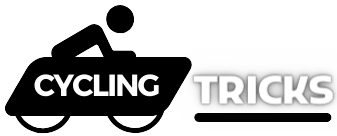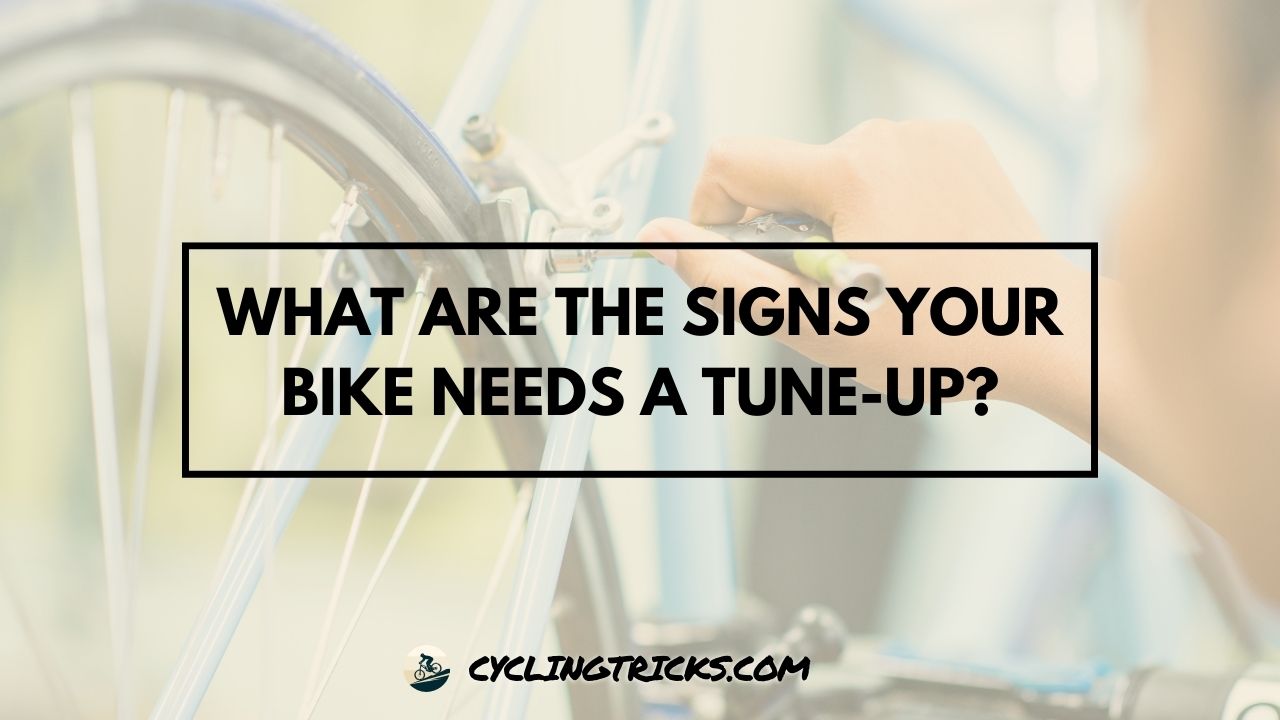Did you know that regular bike maintenance can extend the lifespan of your beloved two-wheeler by up to 20%? Not only that, but it can also improve your riding experience and keep you safe on the road. But how do you know when it’s time for a tune-up?
Let’s dive into the telltale signs that indicate your bike needs some attention.
Key Takeaways:
- Regular bike tune-ups are essential for maintaining peak performance and prolonging your bike’s lifespan.
- Paying attention to signs such as strange noises, shifting problems, braking issues, and unresponsive suspension can help you identify when a tune-up is needed.
- By following a bike maintenance checklist and seeking professional help when needed, you can keep your bike in excellent condition.
- Don’t neglect your bike’s maintenance needs, as small issues can escalate into more significant problems if left unaddressed.
- A well-maintained bike provides a smoother and safer riding experience, allowing you to enjoy your cycling adventures to the fullest.
Strange Noises and Sounds
During your ride, if you start hearing strange noises and sounds coming from your bike, it’s a clear sign that it needs a tune-up. These types of noises can include squeaking, grinding, or rattling sounds that were not present before. Paying attention to these sounds is important, as they often indicate bike performance issues and signs of wear and tear.
When you hear squeaking sounds, it usually means that there’s friction between two components. It could be caused by dry bearings, loose bolts, or even worn-out brake pads. Grinding sounds, on the other hand, may indicate that the drivetrain or chain needs attention. Rattling sounds can be a sign of loose or misaligned parts.
Addressing these strange noises promptly is crucial to ensure the safety and performance of your bike. Ignoring them could lead to further damage and potentially more expensive repairs down the line. By taking action and scheduling a tune-up, you can keep your bike running smoothly and prevent any potential issues from worsening.
Shifting Problems
If you’re experiencing difficulties shifting gears smoothly or noticing delays in gear changes, it might be time for a tune-up. Issues with gear shifting can be caused by cable stretch, worn-out cables, or a misaligned derailleur. A bike tune-up will address these problems and improve your cycling experience.
When gears are not shifting properly, it can make your rides less enjoyable and even affect your performance. Here are some common signs that indicate your bike’s shifting mechanism needs attention:
- Difficulty shifting into higher or lower gears
- Gear changes that are slow or lagging
- Skipping or ghost shifting, where the chain moves unexpectedly between gears
These signs often point to issues that can be easily resolved during a bike tune-up. The mechanic will assess the condition of your cables and replace them if necessary. They will also check the derailleur alignment and make any adjustments needed to ensure smooth gear changes.
Regular maintenance is crucial for optimal gear shifting performance. In addition to getting a tune-up, you can follow a basic bike tune-up checklist to keep your gears in good condition:
- Regularly clean and lubricate your chain
- Inspect and replace worn-out cables
- Check derailleur alignment and adjust if necessary
- Monitor chain and cassette wear, and replace them when needed
Expert Tip:
“If you notice any issues with your bike’s gear shifting, it’s best to address them as soon as possible. Ignoring the problem can lead to further damage and potentially more expensive repairs. Regular tune-ups and proper maintenance go a long way in keeping your bike running smoothly.”
A bike that shifts properly not only improves your overall riding experience but also ensures efficient power transfer while pedaling. So, if you’re experiencing any shifting problems, it’s time to schedule a tune-up and get your gears back in top-notch shape.
| Shift Problem | Possible Cause | Solution |
|---|---|---|
| Difficulty shifting into higher gears | Cable stretch or worn-out cables | Replace cables or adjust tension |
| Difficulty shifting into lower gears | Cable stretch or worn-out cables | Replace cables or adjust tension |
| Slow or lagging gear changes | Misaligned derailleur | Adjust derailleur alignment |
| Skipping or ghost shifting | Misaligned derailleur or worn-out cassette | Adjust derailleur alignment or replace cassette |
Braking Issues
When it comes to bike maintenance, one of the crucial areas to pay attention to is your bike’s braking system. Identifying and addressing any braking issues is essential for rider safety and optimal bike performance. Here are some common indicators that your bike needs a tune-up:
Signs of Brake Problems
- Spongy brake lever feel
- Decreased stopping power
- Unusual noises when braking
Experiencing any of these signs should prompt you to take a closer look at your bike’s braking system. Let’s explore some possible causes and solutions:
Possible Causes and Solutions
| Cause | Solution |
|---|---|
| Worn brake pads | Replace brake pads |
| Damaged brake cables | Replace brake cables |
| Misaligned braking system | Adjust the brake calipers |
Regular maintenance and inspection of your bike’s braking system can prevent potential accidents and ensure that your brakes are reliable and effective when you need them most.
By following a bike maintenance checklist and addressing any braking issues promptly, you can enjoy a safe and smooth ride every time.
Unresponsive Suspension
If your bike has suspension and it feels stiff or unresponsive, it may be due for a tune-up. Over time, suspension components can lose their effectiveness and require servicing. By addressing these issues, you can enjoy smoother rides and better shock absorption.
Suspension plays a crucial role in providing a comfortable and controlled riding experience. It helps absorb impacts from uneven surfaces, reduces fatigue, and improves traction. However, just like any other part of your bike, suspension components can wear out and become less effective over time.
One of the signs of bike wear and tear is an unresponsive suspension. If you notice that your bike feels stiff when going over bumps or fails to absorb shocks as well as it used to, it’s a clear indication that your suspension needs attention.
There are several factors that can contribute to an unresponsive suspension. Accumulated dirt and grime in the suspension fork or rear shock can hinder its movement and reduce its performance. Additionally, worn-out suspension seals, bushings, or springs can also lead to decreased responsiveness.
Regular maintenance and tuning of your bike’s suspension system are vital to ensure optimal performance. If you’re not familiar with the inner workings of suspension components, it’s best to seek professional help for a thorough inspection and tune-up.
A bike mechanic will assess the condition of your suspension, clean any accumulated dirt, and lubricate relevant parts. They may also recommend replacing worn-out seals, bushings, or springs to restore the suspension’s responsiveness.
By addressing suspension issues in a timely manner, you can enhance the overall performance and comfort of your bike. Whether you’re hitting rough trails or cruising through city streets, a well-tuned suspension will provide a smoother and more enjoyable riding experience.
| Symptoms of Unresponsive Suspension | Possible Causes |
|---|---|
| Stiff or harsh ride over bumps | Accumulated dirt and grime in suspension components |
| Lack of shock absorption | Worn-out suspension seals or bushings |
| Reduced control and traction | Worn-out suspension springs |
Conclusion
Regular bike tune-ups are crucial for maintaining the peak performance and longevity of your bike. By paying attention to the signs that indicate your bike needs servicing, such as strange noises, shifting problems, braking issues, and unresponsive suspension, you can ensure that your bike is always in top shape.
To keep your bike in excellent condition, it is important to follow a bike maintenance checklist. This checklist should include regular cleaning, lubrication, and inspection of key components.
Additionally, seeking professional bike maintenance help when needed, especially for complex repairs or adjustments, can further enhance your bike’s performance and prevent potential problems.
Remember, neglecting bike maintenance can result in decreased performance, increased wear and tear, and even safety hazards. By investing a little time and effort in bike maintenance, you can enjoy smoother rides, improved handling, and a safer cycling experience.
So, take care of your bike, and it will take care of you!









